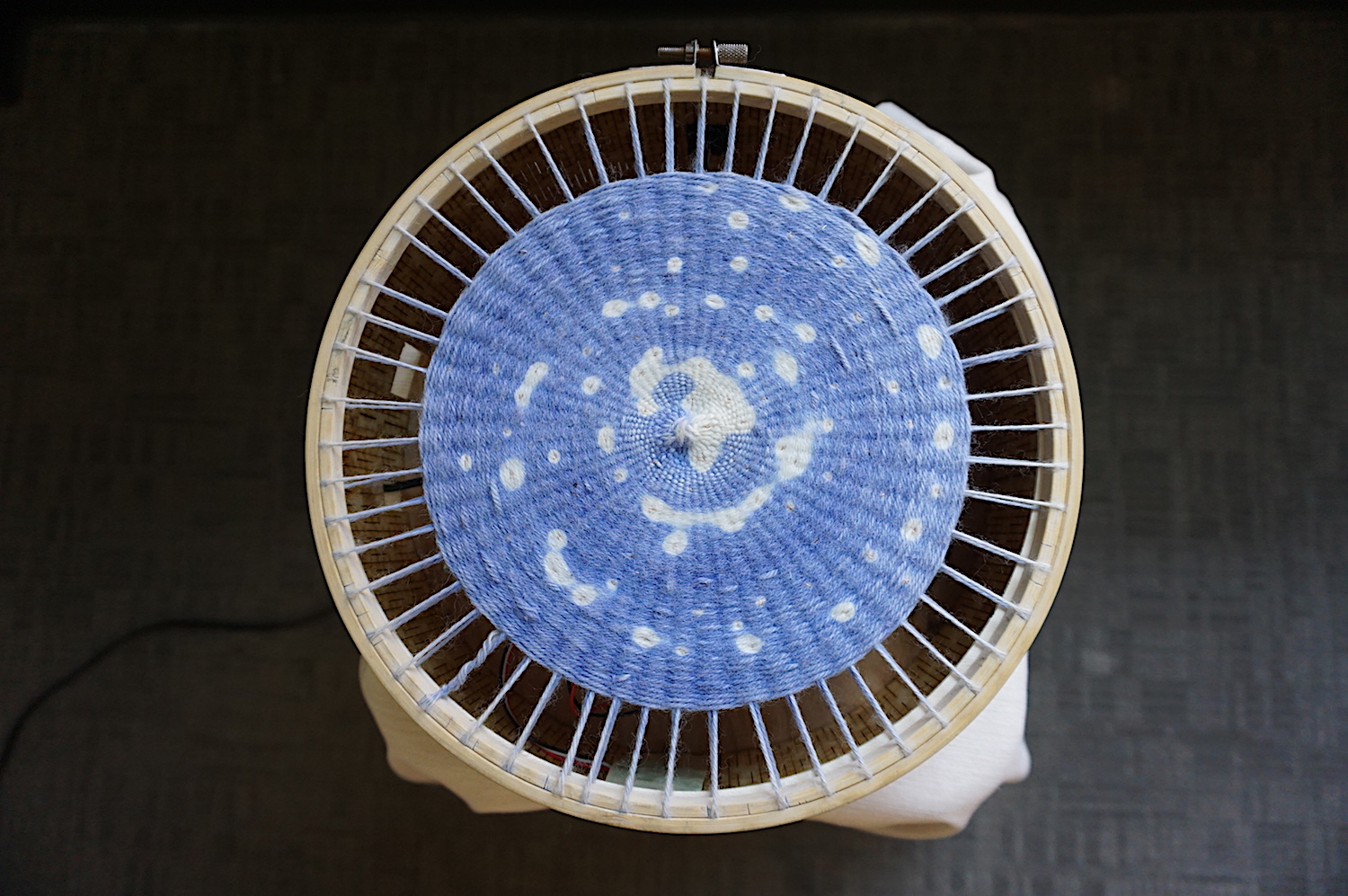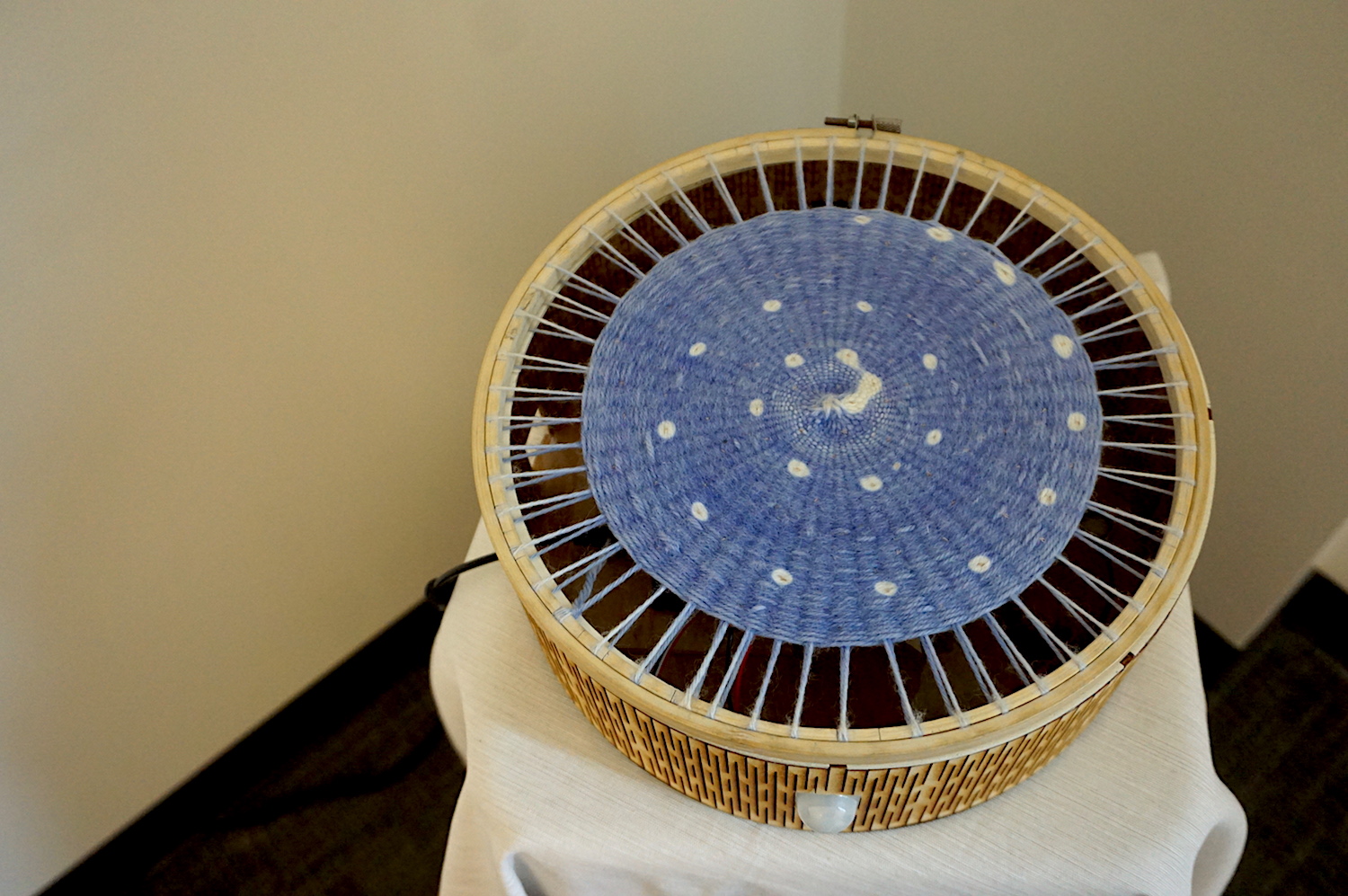THE EMERGING GODDESS
A lo-fi textile interactive canvas inviting people to pause and let cosmic patterns emerge
As a summer research and art resident at ATLAS Institute, CU Boulder , I spent a couple months working on an interactive art project with Laura Devendorf, Assistant Professor at the University and founder of the Unstable Design Lab.
We used thermochromic ink and conductive yarn to explore the possibilities of dynamic pattern creation on a handwoven textile display, controlled by an Arduino and a proximity sensor.
GOAL
The display is triggered by the proximity of the observers, inviting them to pause and let time go slower, vs instant feedback response mechanisms we are used on our everyda technology. As the yarn heats up, a dynamic pattern emerges from the blue canvas, suggesting a Milky Way of stars, a colony of bacteria, appearing and disappearing in a wave.
The work has been exhibited at the conference “INTERSECTIONS Collaborations in Textile Design Research” held in London on September 13, 2017.
PROCESS
The first thing I created was a circular weave with white wool onto an embroidery loop. I used a long needle to help me go through the threads, which helped with speed and precision.
The process was very manual and time consuming, but also had a meditative quality to it.
I calculated that it took me about 12 hours to complete the whole canvas.
Once the canvas was complete, I dyed it with blue thermochromic ink. This ink changes color back to white when a heating source was applied to it.
Once the thermochromic ink dried, it was time to start connecting the electronics to it.
I sew conductive thread with a specific design in mind, that would be activated through an Arduino. Sewing the thin copper thread was quite challenging, but ultimately successful. The connection between the soft textile parts and the hardware is always tricky, requiring to combine soldering to sewing.
Once the electronic circuit was created, I tested the canvas interaction, tweaking the timing of the circuit to make it work appropriately. The heat conducted from the conductive thread changed the color of the canvas, creating this slow milky pattern to emerge.
OUTCOME
The final outcome was the thermochromic canvas mounted on a wooden laser cut container, where a proximity sensor, an Arduino UNO and a ventilator were places, so the interaction could magically take place.
The display is triggered by the proximity of the observers, inviting them to pause and let time go slower, vs the instant feedback response mechanisms we are used to with our everyday technology.
As the yarn heats up, a dynamic pattern emerges from the blue canvas, suggesting a Milky Way of stars, a colony of bacteria, appearing and disappearing in a wave.
The canvas, result of the collaboration between Laura Devendorf, Assistant Professor at CU Boulder and founder of the Unstable Design Lab, was presented at the ATLAS Institute at the end of August 2017, where it still remains on display, and at the at the conference “INTERSECTIONS Collaborations in Textile Design Research” held in London on September 13, 2017.









